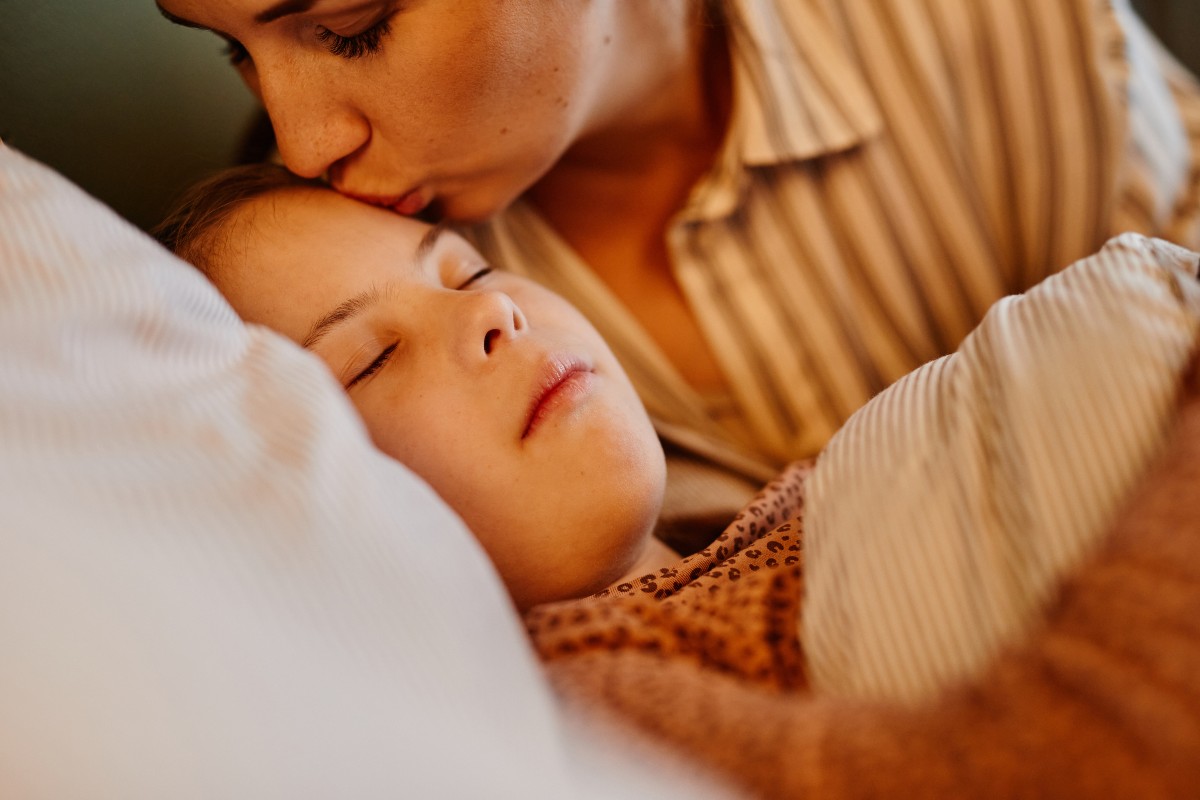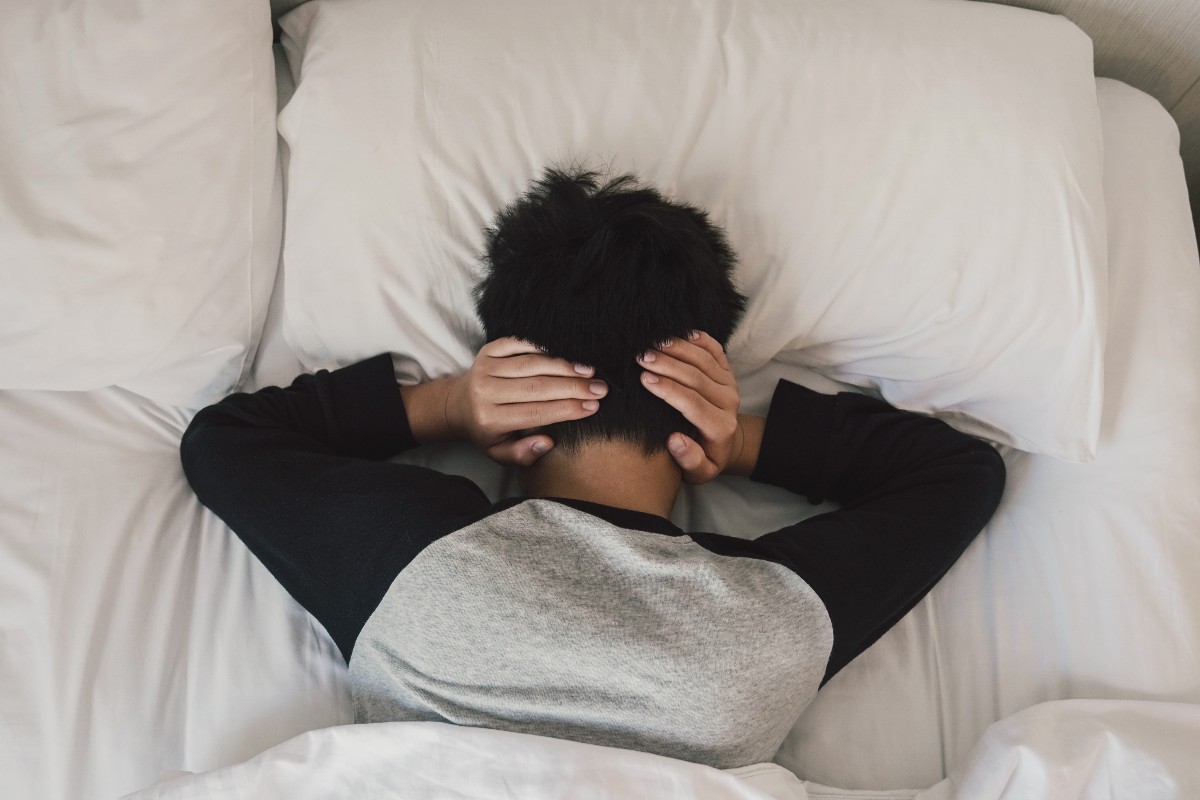
Sleep and Autism: How Can I Help My Child with ASD to Sleep Well?
According to the National Autistic Society, more than 1 in 100 people are on the autism spectrum. All parents struggle with bedtimes from time to time, but if your child has been diagnosed with autism, supporting healthy sleep patterns can be even more of a challenge.
An estimated 50-80% of autistic children experience sleep problems; most commonly insomnia, but they are also more likely to have problems with sleep timing and nightmares (Sidhu et al 2024). One study found that on average children with autism took 11 minutes longer to fall asleep, and stayed asleep for 33 minutes less than children without autism (Elrod 2015). Sleep problems have been found to worsen daytime symptoms of autism, and worsen parental stress (Singh & Zommerman 2023). This means that solving sleep problems can have huge benefits, not just for the child, but for the rest of the family.
In this article we’ll explore the most commonly asked questions for parents of children with autism, and evidence-based strategies to help improve sleep.
1. Why are children with autism less likely to sleep well?

Every child is different, but there are common themes for children with autism which can make sleep more challenging:
- Sensory sensitivities: Autism can be linked to both over and undersensitivity to light, and noise, as well as temperature and pain. Dim lights are important before bed for everyone, but become even more important for sensitive children. Sensory overload before bedtime is likely to lead to ‘hyper’ behaviour and overwhelm, which will take time to calm down from. Use of screens before bedtime is also likely to overstimulate autistic children, but is also addictive; they may strongly resist switching off from screens before bed.
- Extreme anxiety, and emotional dysregulation: Many children with autism live in a constant state of ‘fight or flight’ which can make winding down to relax before bed very difficult, and make them more likely to wake up during the night.
- Changes to routine: having a consistent bedtime routine is a reassuring and helpful strategy to calm children before bed, but autistic children are likely to respond negatively to changes in this routine. They may get agitated and anxious if there is a change such as with travel, or a change in caregiver.
- Delayed body clock: There is some evidence that many autistic children develop a ‘night owl’ chronotype or delayed phase, meaning that they don’t feel tired until later than other children their age. Teenagers, with and without autism, typically have a delayed body clock.
- Struggling to read social cues: where most children might pick up on other people looking and feeling tired at bedtime, an autistic child is likely to be less aware, and may therefore be less ready to wind down at bedtime without explicit warning.
- Co-existing problems: Autism is commonly diagnosed with GI problems, ADHD, anxiety, obesity, or sleep apnoea which can also negatively influence sleep quality (Micai et al 2023).
2. What can I do if my child isn’t sleepy at bedtime?
You’ll find recommendations for how many hours of sleep children need here. School aged children, aged 6 to 12 years old, are recommended to sleep for 9 to 12 hours. If your child is refusing to go to bed because they’re not tired, and they also find it hard to get out of bed in the morning, it might be because they have a ‘delayed phase’. In other words, their internal body clock is on a later timezone.
To tackle this, you could try ‘bedtime fading’. In this technique, start with a bedtime when your child naturally feels sleepy. Each week, bring bedtime forward by 15-30 minutes, until you get to the target bedtime. For this strategy to work, wake your child at the same time every morning, even on weekends. Try to encourage them to get plenty of bright light exposure in the morning. In the last hour before bedtime, dim the lights, and avoid stimulating activities including screens. Keep screens out of the bedroom. Give them plenty of warning and reminders that bedtime is coming. At bedtime, be firm, consistent and calm.
For all children, getting physically active on a daily basis will help with both falling asleep, and staying asleep. If your child has intellectual disabilities, or movement problems, it can be particularly difficult to help them get active, but every little bit helps. Ideally the activity is outside, so that they are exposed to natural light during the day.
3. What can I do if my child won’t fall asleep without me?
If your child becomes anxious about falling asleep without you, it is likely to take a gradual approach to help them adapt to falling asleep on their own with confidence. Start with a consistent and calming bedtime routine that ends with them in their own bed. Then, here are two strategies you could try:
i) Checking method: Explain that rather than staying in the room, you’re going to check in regularly. Start the intervals close together and check in every 5 minutes to reassure them that all is well. Gradually stretch the interval times as they develop more confidence.
ii) Camping out: You could start with a mattress on the floor so that you are sleeping nearby, but not in the same bed. Gradually move the mattress a little further away. Then transfer to a chair and explain that you’ll be there until they fall asleep but then leave the room. Move the chair further from the bed, until they are happier falling asleep alone.
3. My son kicks and moves sporadically as they are trying to fall asleep. Is there anything I can do?
This sounds as though they may be suffering from restless legs syndrome, RLS. This is typically a tickling, tingling, or itching sensation, which can only be relieved by movement. Research suggests that RLS is more common with autism, affecting 20-40% of children with sleep problems (Kanney et al 2020). RLS is often associated with low iron levels. If you suspect RLS, speak to your doctor for an assessment. Treatment might include iron supplementation, or other medication.
5. Do weighted blankets help children with autism to fall asleep?
A weighted blanket is made with special weight-adding materials such as beads or chains, allowing it to cover the body evenly and create a pleasant hugging sensation. This sensation of deep touch can be very calming for many people, especially those with special sensory needs including autism and ADHD.
Research has found that many children and adults find weighted blankets a useful tool for calming down, easing anxiety and preparing for sleep (Wong et al 2024). There is some evidence that weighted blankets can help some children with autism to fall asleep faster, and stay asleep for longer, but it is not clear which children are most likely to benefit, or how long for (Yu et al 2024). In general the evidence is promising, but it might be something you need to experiment with and keep a sleep diary to know whether it’s helpful for your child.
6. My daughter wakes up during the night, and struggles to fall back to sleep. This is making her very tired at school, and she is getting anxious about sleep.
For children and adults with insomnia, the main challenge is likely to be ‘hyperarousal’. Their bodies struggle to relax, and they stay in a state of ‘fight or flight’. This means it can be harder to fall asleep, and sleep becomes lighter. Over time, anxiety about waking up can make the problem worse.
The first step is to introduce regular relaxation practices, such as progressive muscle relaxation, or deep diaphragmatic breathing. Slow controlled breaths help to calm the heart rate. Once they have practiced this regularly during the day, encourage them to use the relaxation technique if they wake up during the night.
If they wake up and they feel unable to relax, the best advice may be to get out of bed, and do something gently distracting, such as reading, or building Lego, until they feel sleepy again. This avoids being stuck in bed, with worrisome thoughts in their minds. The goal is for sleep to be a place of calm and relaxation, not worry.
7. When should we see a doctor about sleep problems?

Behavioural strategies like these are usually recommended as the first line approach for sleep problems because they are the most effective. However, if you’ve already tried to implement healthy sleep habits, and your child is still struggling with sleep problems which have a negative impact on them during the day, speak to your doctor or medical team. There may be something else interfering with sleep. They may also consider medication, such as melatonin, to help regulate the timing of your child’s sleep. To help your doctor get a full understanding what is going on, try to keep a sleep diary for a week before your appointment.

Dr Sophie Bostock - Dr Sophie Bostock
Sophie brings a wealth of expertise to the role having spent the last six years researching and championing the importance of sleep science in NHS and corporate settings. Sophie was responsible for improving access to the award-winning digital sleep improvement programme, Sleepio, as an NHS Innovation Accelerator Fellow. She has delivered hundreds of talks, including for TEDx and Talks@Google, and regularly features as a media sleep expert.